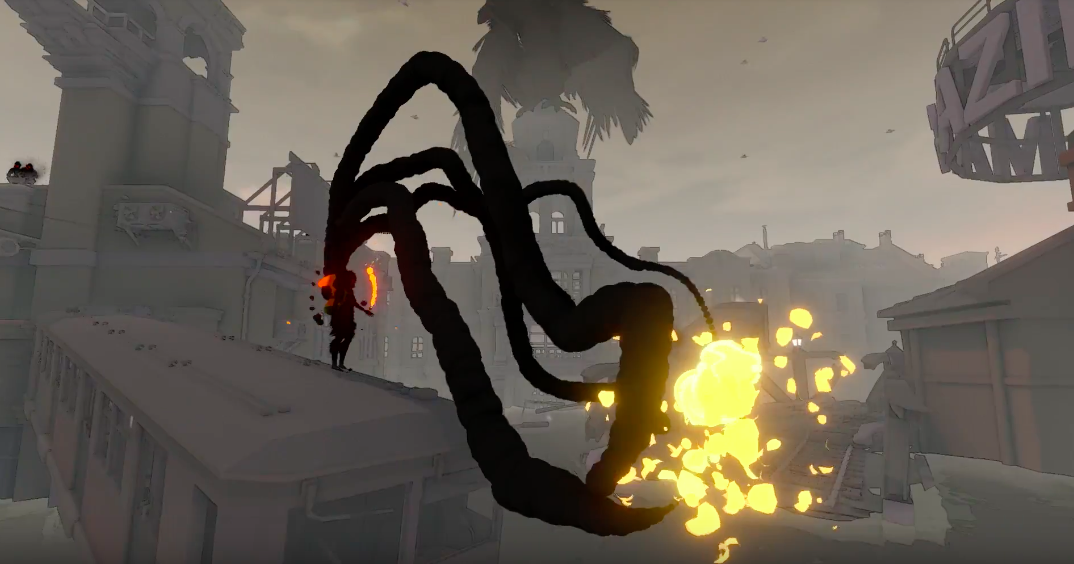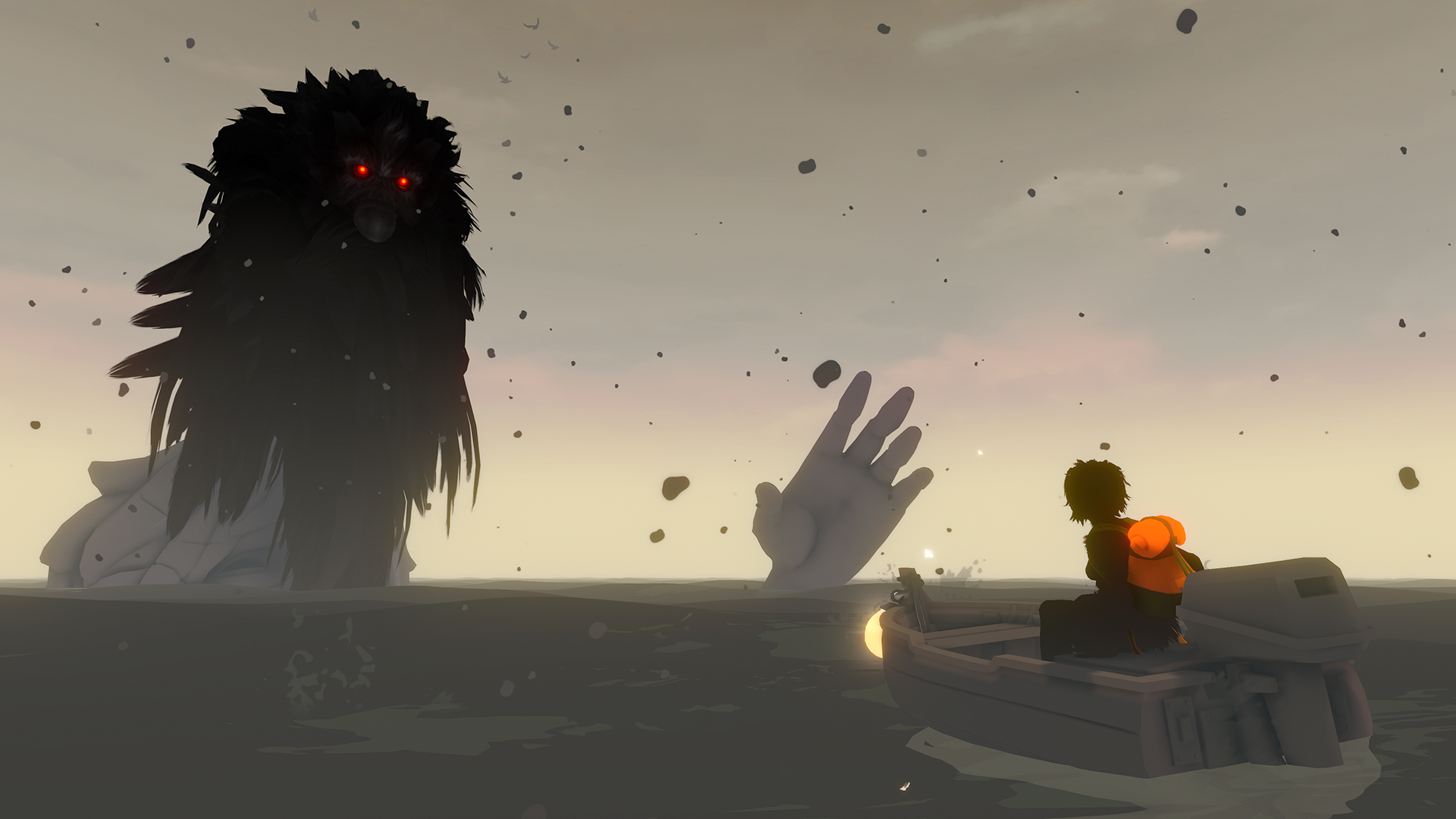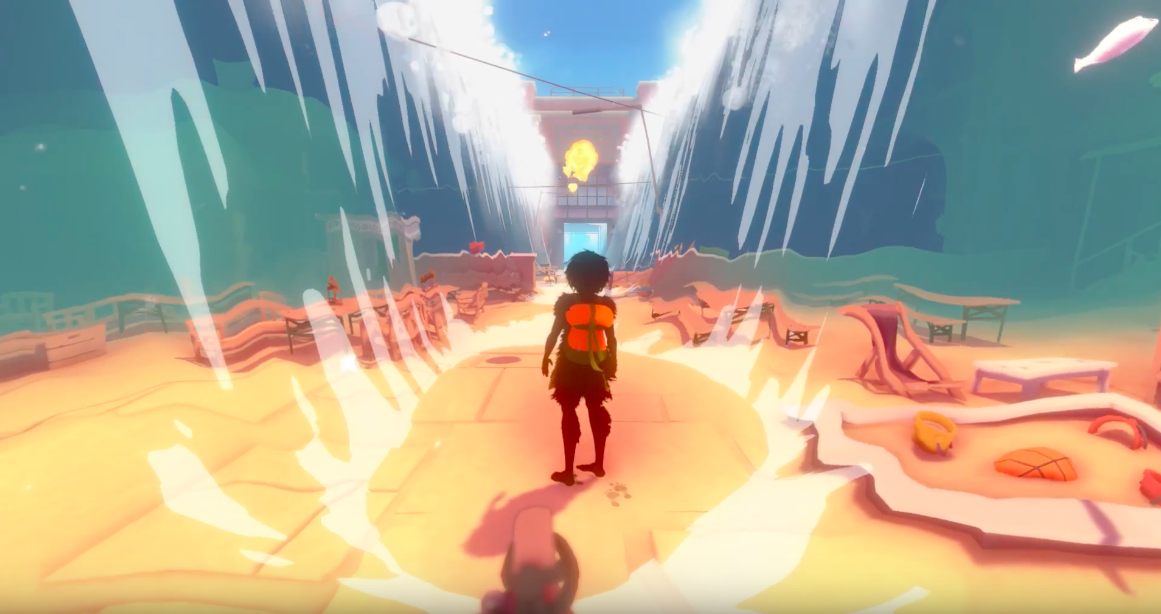‘Sea of Solitude’ Is a Beautiful but Imperfect Exploration of Loneliness
Credit to Author: Nicole Clark| Date: Fri, 05 Jul 2019 13:01:15 +0000
Content Warning: Discussion of mental illness including depression, anxiety, and suicidal ideation.
You are a young woman named Kay. You don’t know why you look this way, covered in gnarled, black tendrils. Your eyes are red. You amble around with a preternatural sense of loss. And you are lost. You, the character, in a game where the waters are murky, rumbling, and rainy and have flooded an entire city. “I’m still trying to piece it together,” Kay says. “What is wrong with me. Where am I.”
You, the player, are also lost—not exactly sure where you are, what mysteries you’re meant to solve, and why the protagonist of this game looks like this.
This is Sea of Solitude, the newest game from Jo-Mei (an indie studio in Berlin), which releases today on the PS4, Xbox One, and PC. You play as Kay, whose backstory is mysterious, and whose intense loneliness has transformed her physical appearance. It’s a gorgeous game, with much to love, but its dense, episodic narrative and repetitive gameplay occasionally obscure its core message. You begin the game sitting in a boat on troubled waters. You paddle your small dinghy towards the singular light source in the distance, the falling rain creating a pensive atmosphere. As the lighthouse appears, you’re able to lower the water line—making it glassy and clear—and lighting the entire region. It is gorgeous.
You’re tasked with figuring out what happened to Kay—why she looks like this, what events in her past have inspired this transformation, and what lessons can be learned by pressing forward. To do so you traverse atmospheric seascapes and broken cities in a nearly empty environment filled with otherworldly creatures that the game refers to as “monsters.” These monsters are often massive in scale, covered in black gnarls not dissimilar to yours. And as the narrative unravels, you learn they’re each somehow connected to Kay—either as people in her life, or as surreal manifestations of emotions that can be interpreted in a more open-ended way.
Though Sea of Solitude lasts around four hours, the world was captivating enough to make me spend additional hours simply running around in it. Fluctuations in lighting and water level effectively communicate tone and mindset in a way rarely seen in games. When well lit, it has the expansive freedom and awe of Journey. At its darkest, the game calls to mind favorable comparisons to Limbo or Inside. It’s cinematic, it begs to be traversed, and it’s marked by extreme vicissitudes in fortune. All life and energy can be sucked away at a moment’s notice thanks to a giant monster or Kay interacting with an area of “corruption.”
This is Sea of Solitude‘s primary gameplay mechanic. Kay has a backpack that she uses to collect swirling black substances, known as “corruption,” that infect balls of light that would otherwise light the region. She has a flare that acts as a very well-calibrated wayfinder, guiding her through cityscapes and seas by boat and foot. The game predominantly sticks to a basic formula of region exploration and corruption clearing, though each chapter plays with a different core puzzle mechanic—with varied levels of success. There’s evasive swimming, enemy luring, mild maze running, and basic platforming.

These chapters are where the game deviates substantially from what I’d anticipated based off of trailers and early demos. Previews implied an ethos of solitary self-improvement or focused introspection with an ancillary cast of lovable NPCs—something that might live alongside Celeste, the beautiful, challenging platformer about a young woman climbing a mountain that makes her depression and anxiety manifest in a bodily form.
Instead, chapters center around specific people Kay cares about who are experiencing forms of grief, estrangement, and suffering. Every few chapters focuses on their lives, and each of these sections resolves into a kind of parable. As a result, the game’s focus can be more accurately characterized as Kay’s difficulties with “caregiver syndrome”—learning how to be a more effective caretaker and support system, while realizing the toll it can personally take. In that sense, it’s still centered on the personal experience of mental unwellness—a substitution I use here, because the game doesn’t precisely label whether Kay has depression, anxiety, or another diagnosis, though she visibly struggles with feelings of worthlessness.
None of this alone is a value judgment. But the varied narrative focuses and individual episodes mean that Sea of Solitude has to work harder to communicate a cohesive message than it would have, had these stories all been about Kay, rather than people in her life. There’s a chapter about childhood bullying and suicidal ideation, and a chapter about marital challenges. Each story is fairly robust on its own, and could plausibly all be tied together through Kay acting as a nexus—but they don’t always cohere. With certain narratives imploring Kay to listen closer, while others tell her to let go, it can be a little difficult to track.

This is further complicated by the subtext of “monstrosity”—what constitutes monstrosity and what it means for “monsters” to be resolved back into human form. It would be easy to read the game as a metaphor about “mental unwellness” turning people into monsters, especially considering Kay herself is animated in the same style as these imposing enemies. But the deeper you get into the game, the more apparent it becomes that the conceit of monstrosity is meant to evoke the way mental illness can make us feel as if we are monsters—can make us unrecognizable, even to ourselves. It’s about the self-loathing, anger, and grief that can manifest at any moment, injecting sorrow into times you thought you felt fine, taking flight in intimidating forms. In Sea of Solitude‘s strongest moments, it communicates this core emotional takeaway with lacerating, startling efficacy.
In an early level, after Kay has reached one of her first checkpoints and lit a region for the first time, a mountainous sea creature wearing a giant shell blocks her path, screaming “You worthless piece of shit. You have no idea what you’re doing, do you, as usual.”
In my playthrough, I cried. I wasn’t expecting to. These are words I have told myself, profoundly disturbing as they are. They dredge up closely guarded kernels of self-loathing, in the same vein as Celeste‘s main antagonist, who looks nearly identical to Madeline and taunts her in the moments she is most vulnerable. My depression both is and isn’t me—it’s not how I identify, but it’s also not something I can separate from who I am. I do not know where it ends and I begin, nor do I think the distinction is healthy or helpful, because it would suggest I could depart from a part of myself or consider it impermanent.
But I do know that self-loathing can feel like a massive creature blocking my path. Sometimes it feels like the creature screaming these words at me is larger than I am, sometimes I cannot tell whether this creature is protecting or inhibiting me.
Sea of Solitude‘s asserted commonality between the character I am playing as and the creature that is blocking my path, really gets at this deeply buried fear. Pair this with the studio’s deft hand at visual horror and the game produces goosebumps. These moments are incredibly effective, and these images will stay etched in my mind’s eye for some time—a giggling girl in a yellow raincoat, morphed into devilish assailants with heads subsumed by large mouths of sharpened teeth. Exorcist-style floating humanoid forms with glowing eyes. A majestic, white wolf cracking into ice-y fragments.
But I wanted the game to focus on these moments more, give them more breathing space, rather than focusing so much on dialogue and world building for episodic narratives that felt, at times, bloated with exposition.
Like these narrative details, the gameplay mechanics were at times a bit “overwritten.” Some of the platforming isn’t quite airtight, and can grow frustrating after repeated falls that force Kay to start at the bottom. Other times, Kay is penalized because she isn’t standing in a specific region to siphon off a necessary in-game item, and the margin for error feels too large. Horror becomes slightly less effective when certain core puzzles and monsters remain static—as in the case of Kay’s continual dodging of a large sea creature. It’s easy to imagine the game could have shrugged off the responsibility of puzzles and platforming challenges completely, leaning entirely on its narrative and visual strengths in a primarily walking sim type format with basic corruption clearing mechanics.
These gameplay snags would not be so frustrating if the fundamental mystery at the heart of Sea of Solitude wasn’t so propulsive, urging you to move over its hurdles more quickly. My wish for more to do or explore is symptomatic of just how enticingly gorgeous the game’s environment is. I cannot understate the joyous simplicity of just steering the boat around, or the awe inspiring spine tingles of splitting the water like Moses, or watching it form a gigantic bowl around me.

The kind of story Sea of Solitude is trying to tell is deeply ambitious. It’s the kind of game that might take an indie studio numerous attempts, even with the support of a giant like EA. Sea of Solitude may have drawbacks, but at the end of the day the game is still a stunning accomplishment. It’s still a world I enjoyed spending time in.
Follow Nicole Clark on Twitter.
This article originally appeared on VICE US.